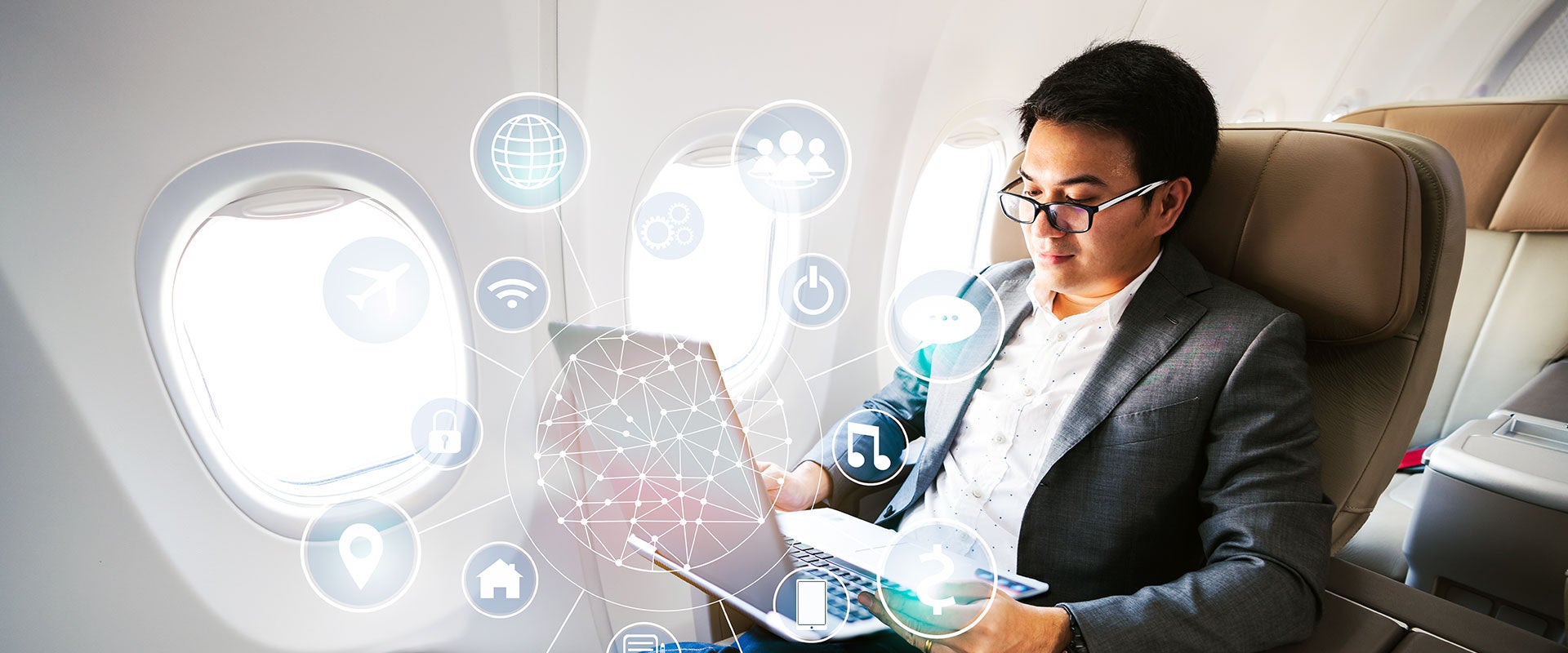Global airline traffic is surpassing 2019 levels, but the industry is facing serious challenges, including elevated fuel costs, pilot shortages, increasing competition, calls to reduce carbon emissions and shifting traveler preferences. Like many industries, airlines are increasingly turning to artificial intelligence (AI) for help in addressing these issues. For example:
- Lufthansa leveraged Google Cloud’s AI software to optimize capacity by forecasting wind patterns that affect flight operations (e.g., delays, cancellations).
- Air France used generative AI to create personalized advertising campaigns that target individual customers based on their preferences.
- JetBlue invested in and partnered with FLYR Labs, using AI to optimize revenue management.
- Delta developed Delta Sync, an initiative that integrates the total guest travel experience — from Wi-Fi to food and beverages.
- Emirates Airlines leveraged generative AI for customer service improvements, including AI-driven cabin crew training and efficient flight route planning.
The latest evolution of generative AI technology augments earlier AI/machine learning (ML) tools and provides a powerful way to synthesize new and original content, creating new opportunities for airlines to improve back-end functions through a much more accessible (and potentially more powerful) user interface that also directly supports consumer-facing operations. This technology is also enhancing employee productivity and output across sectors, enabling higher performance for early generative AI adopters.
Successful strategies and business outcomes are driven by both AI (e.g., data interpretation and analysis) and generative AI (e.g., content creation and issue resolution), depending on a company’s specific situation and needs. In this edition of Executive Insights, L.E.K. Consulting explores the benefits and key challenges of adopting AI and generative AI for airlines and offers a roadmap for successful deployment.
Benefits of generative AI for airlines
AI and generative AI can drive wide-ranging benefits across organizations, including increased deployment of data-driven decision-making. For airlines in particular, generative AI can be leveraged to improve two key areas: customer experience enhancement and functional optimization.
Customer experience enhancement
- Virtual agent: Using generative AI, airlines can offer personalized travel solutions and recommendations, such as flight scheduling and in-flight amenities, through conversational chatbots. Beyond predictive AI’s upselling suggestions (e.g., car rentals, hotels), generative AI enhances interactions by providing two-way conversations and tailoring recommendations to the traveler’s specific itinerary (e.g., recommending an electric vehicle for certain driving distances).
- Virtual customer service: Generative AI can be trained to provide quick solutions to common customer issues by instantly serving data from an airline’s reservation system, help center, etc. For example, Delta uses its AskDelta chatbot to help passengers quickly book alternative travel arrangements, including accommodation, when delays or cancellations occur. The chatbot also answers questions about airline policies and procedures, minimizing customer friction and reducing the need for live customer service.
- Personalized frequent flyer programs: Analyzing passenger data such as travel preferences and past behavior, generative AI can improve loyalty program features by recommending targeted redemption opportunities and creating tailored rewards and loyalty incentives. It can also be used to develop a more user-friendly way to navigate possible itineraries and identify compelling redemption options.
Functional optimization
- Communications leverage: Departments such as marketing, human resources, investor relations and public relations/communications can also use generative AI to create first-pass content (e.g., press releases, internal communications, in-flight training videos, scripting for social media posts) more quickly and cost-effectively.
- Engineering efficiency: Generative AI already helps airlines diagnose software issues more quickly, enabling faster issue resolution. It can automate repetitive and time-consuming software engineering tasks (e.g., writing code, identifying potential errors and bugs, optimizing coding for scalability). Also, generative AI can be leveraged to develop digital twins, which help with predictive maintenance as well as both product and air service development.
- Customized training: Generative AI crafts tailored training simulations with dynamic scenarios, adjusting to individual performance and providing personalized feedback. This approach enhances realism and relevance, boosts pilot confidence and safety, and gives instructors more time for one-on-one teaching. Generative AI offers similar benefits to other airline personnel, such as flight attendants and ground crew.
- Revenue management (RM): RM departments have used AI for years to optimize unit revenue, but new generative AI-based tools help augment base fares with more personalized offers/vacation packages.
Challenges of deploying generative AI, specifically, for airlines
While the benefits of generative AI are clear, deploying it in the airline industry can be challenging. See Figure 1 for some of the key barriers.








